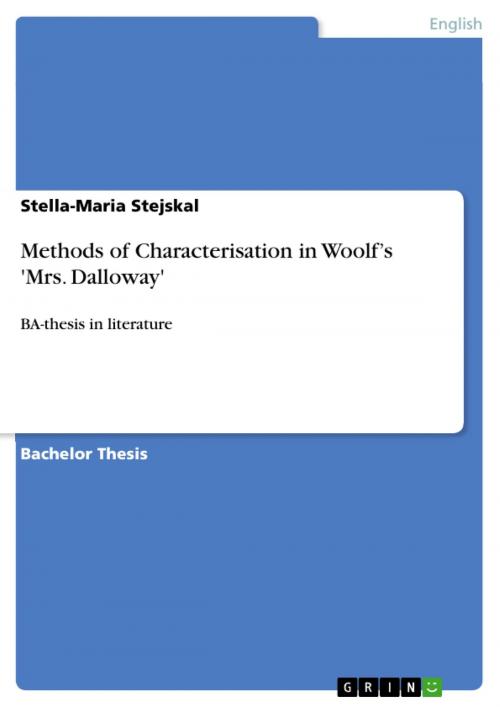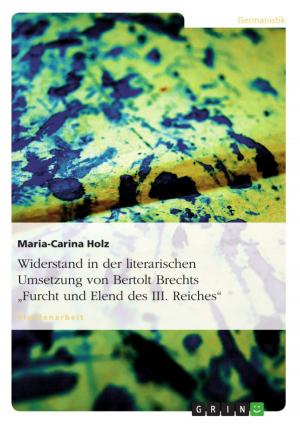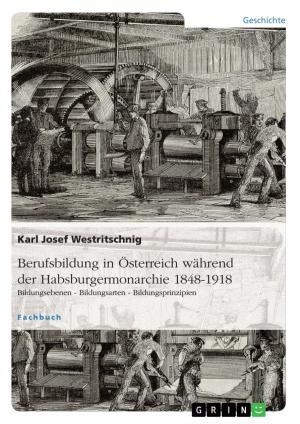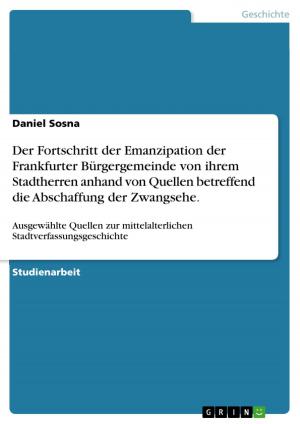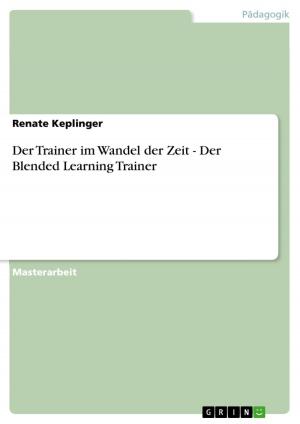Methods of Characterisation in Woolf's 'Mrs. Dalloway'
BA-thesis in literature
Fiction & Literature, Literary Theory & Criticism, British| Author: | Stella-Maria Stejskal | ISBN: | 9783640097555 |
| Publisher: | GRIN Verlag | Publication: | August 26, 2016 |
| Imprint: | GRIN Verlag | Language: | English |
| Author: | Stella-Maria Stejskal |
| ISBN: | 9783640097555 |
| Publisher: | GRIN Verlag |
| Publication: | August 26, 2016 |
| Imprint: | GRIN Verlag |
| Language: | English |
Bachelor Thesis from the year 2007 in the subject English Language and Literature Studies - Literature, grade: 6.0 (CH), University of Bern, 25 entries in the bibliography, language: English, abstract: Virginia Woolf's Mrs. Dalloway is one of the great classics of literature that still manages to fascinate readers. I propose that the subtle strength of observation and the creation of its characters contribute to the strength and provide the main point of interest in this novel. According to Abbott, 'one truism about narrative is that it is a way we have of knowing ourselves'. Abbott emphasises characters, as well as action, as being among the principle components within narrative. He goes even further by arguing that' it's only through narrative that we know ourselves as active entities that operate through time'. This paper will examine in detail the creation of characters with reference to Mrs Dalloway. There are however many more methods of characterisation that elaborate on those three fundamentals and in this paper I will describe which methods Virginia Woolf uses to craft Mrs. Dalloway. I will begin with an overview of the stream-of-consciousness and free-indirect- discourse methods and then, by closely analysing the literary text, show how Woolf uses this technique as a mode of characterisation. Memory as a technique of characterisation will then be discussed followed by an examination of characterisation through perception and perspective. These two aspects however are strongly linked to, and can therefore be considered a subcategory of, the method of free-indirect-discourse. Particular attention will be given to showing how the perception of London serves Woolf as a tool for characterisation. Finally I will investigate the role of foil characters.
Bachelor Thesis from the year 2007 in the subject English Language and Literature Studies - Literature, grade: 6.0 (CH), University of Bern, 25 entries in the bibliography, language: English, abstract: Virginia Woolf's Mrs. Dalloway is one of the great classics of literature that still manages to fascinate readers. I propose that the subtle strength of observation and the creation of its characters contribute to the strength and provide the main point of interest in this novel. According to Abbott, 'one truism about narrative is that it is a way we have of knowing ourselves'. Abbott emphasises characters, as well as action, as being among the principle components within narrative. He goes even further by arguing that' it's only through narrative that we know ourselves as active entities that operate through time'. This paper will examine in detail the creation of characters with reference to Mrs Dalloway. There are however many more methods of characterisation that elaborate on those three fundamentals and in this paper I will describe which methods Virginia Woolf uses to craft Mrs. Dalloway. I will begin with an overview of the stream-of-consciousness and free-indirect- discourse methods and then, by closely analysing the literary text, show how Woolf uses this technique as a mode of characterisation. Memory as a technique of characterisation will then be discussed followed by an examination of characterisation through perception and perspective. These two aspects however are strongly linked to, and can therefore be considered a subcategory of, the method of free-indirect-discourse. Particular attention will be given to showing how the perception of London serves Woolf as a tool for characterisation. Finally I will investigate the role of foil characters.
